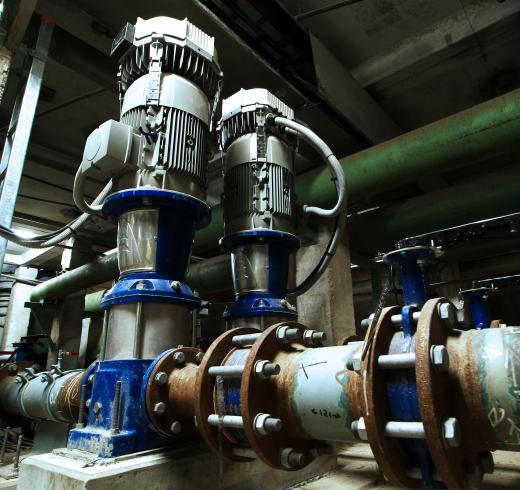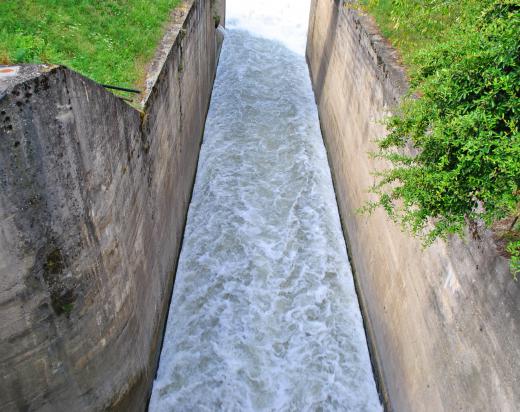A turbine pump is a centrifugal pump that is mainly used to pump water from deep wells or other underground and man-made bodes of water to water distribution systems. A centrifugal pump consists of a pump shaft, a rotating device known as an impeller, and a motor or an engine. A turbine pump may consist of multiple semi-open or enclosed impellers, also known as "stages." A metal plate called shroud supports the vanes of the impeller in an open or semi-open impeller, whereas in an enclosed impeller, the shroud encloses the impeller vanes. The pump also has a water intake point and a water discharge point.
The motor on this type of pump is usually placed above the water level, but submersible types are available depending on the requirement of the application. The total energy taken by the pump to move water from the resource — i.e., the supply tank — to the point of discharge is known as total head. The total head of a powerful pump can exceed several hundred feet (over 70 meters).

On operation, water enters the center of the rotating impeller, which is known as the "eye" of the impeller. The pump shaft is a steel rod that transfers power from the motor or rotary engine to the impeller. Further, water is accelerated and pushed out along the vanes of one impeller to the next, if any, and finally to exit the pump. In this way, electric power is converted to mechanical energy, leading the water to flow under a specific pressure. As a result of this mechanism, more water enters the pump from the water source.

Generally, turbine pumps have a constant head, and water flows uniformly at high pressure. The stages can be connected in series to increase the head capacity of the pump. Two common types are submersible and deep well turbine pumps, which are also known as vertical turbine pumps.
As the name suggests, submersible pumps have a submersible motor; the pump is installed just above the motor, and both of these components are suspended in water. Submersible pumps use enclosed impellers and are easy to install and maintain. These pumps run only on electric power and can be used for pumping water from very deep and crooked wells. Moreover, they are likely to be struck by lightning and require constant flow of water across the motor.
Deep well or vertical turbine pumps are specially fabricated for pumping water from wells. They are less expensive than submersible pumps with small diameters. These pumps consist of open or semi-open impellers, which must be periodically adjusted for proper functioning of the pump.
Vertical pumps are mainly used in those wells where the water surface fluctuates regularly. They can run on both internal combustion power and electric power. Installation and repair of this type is more difficult and expensive than other centrifugal pumps, but despite this drawback, they provide a high flow rate and high efficiency.
Turbine water pumps are used for various applications, such as pumping water for irrigation, firefighting, hydroelectricity, and treatment of waste water. The major advantage of the turbine water pump is its low revolutions per minute, or RPM, with a high and constant head. This feature enables the use of these pumps for the continuous pumping of water from deep wells.
